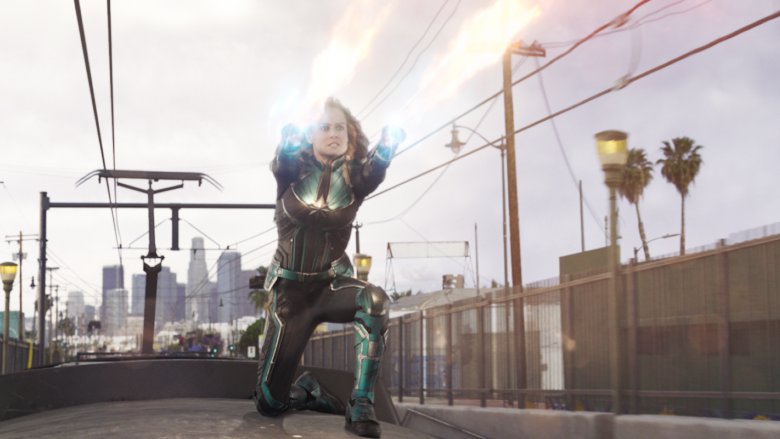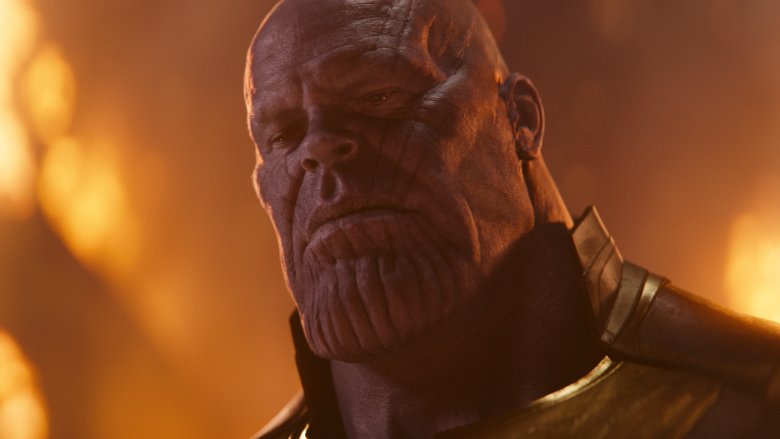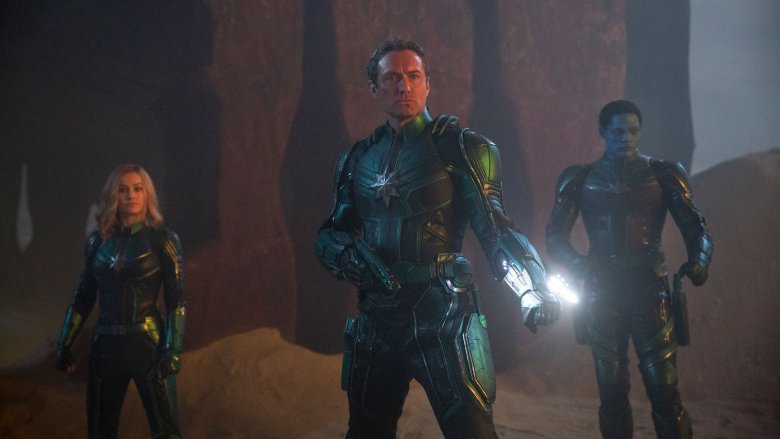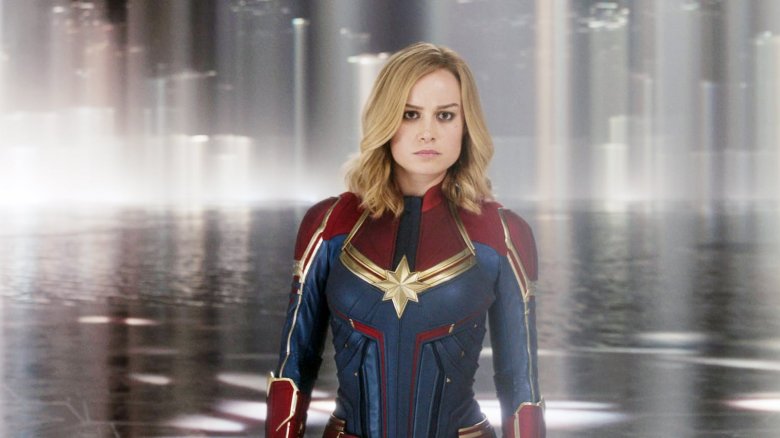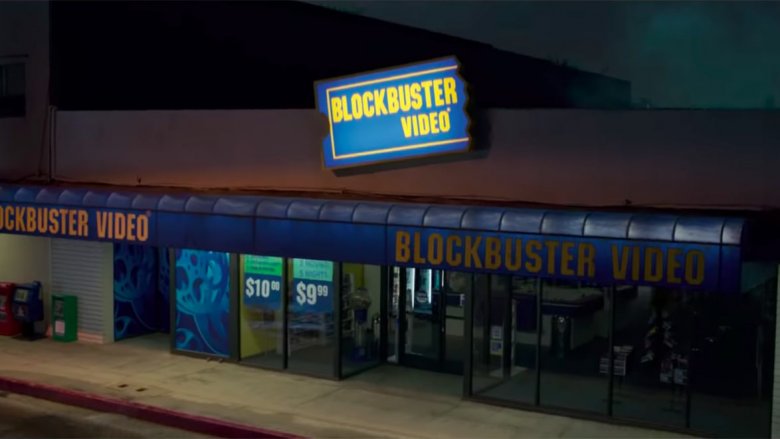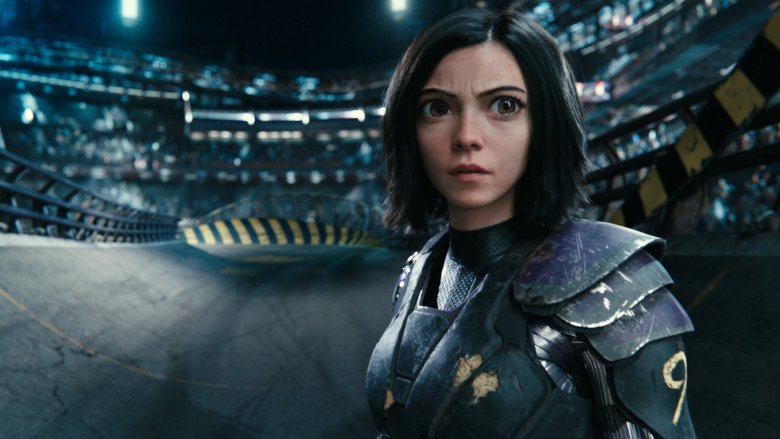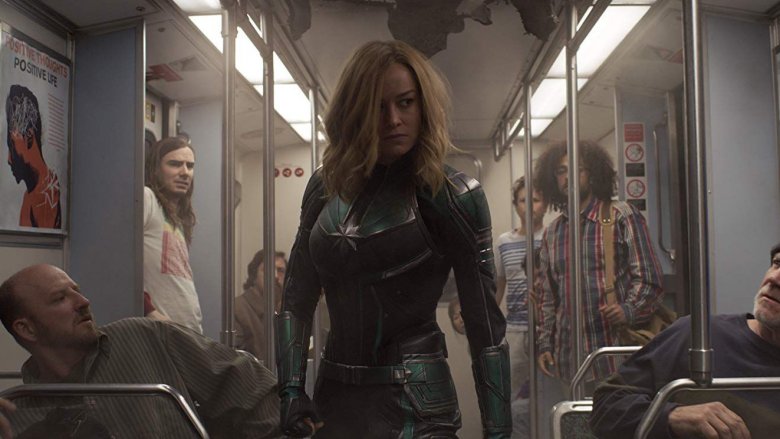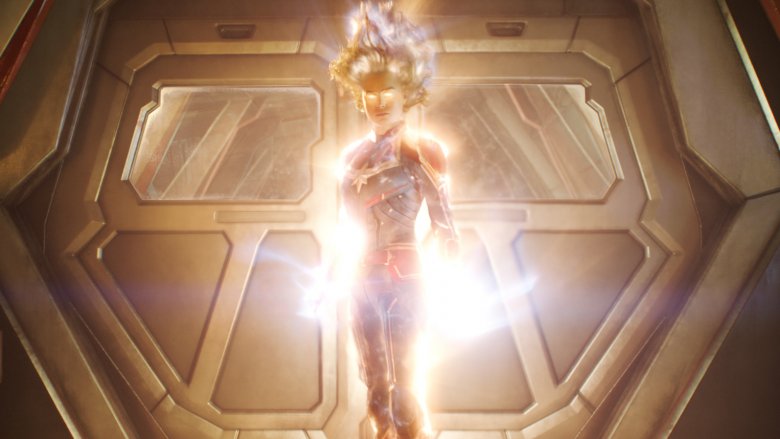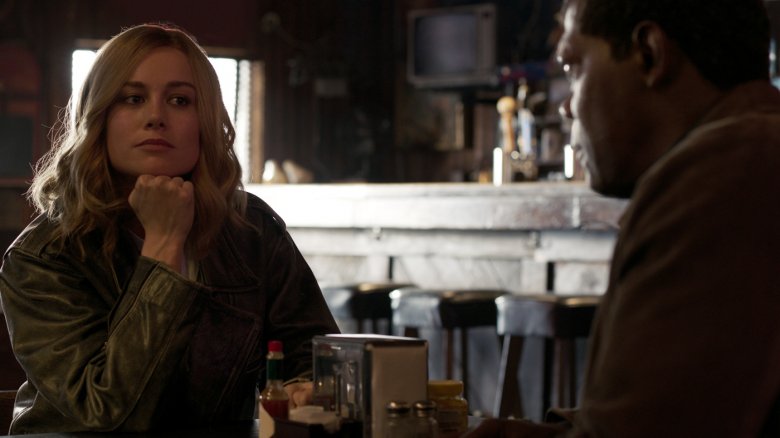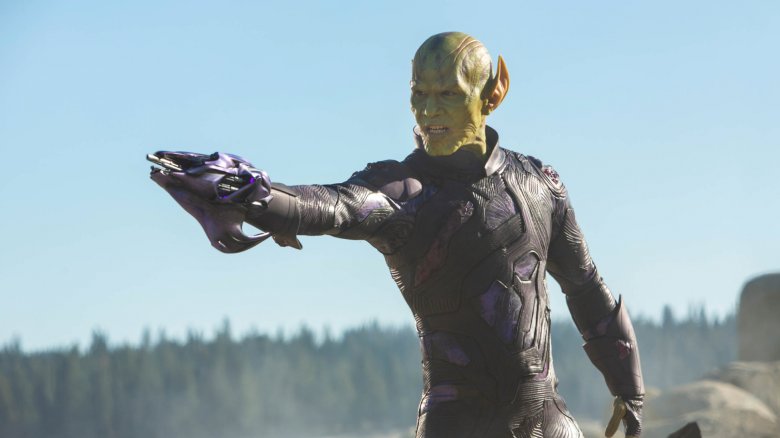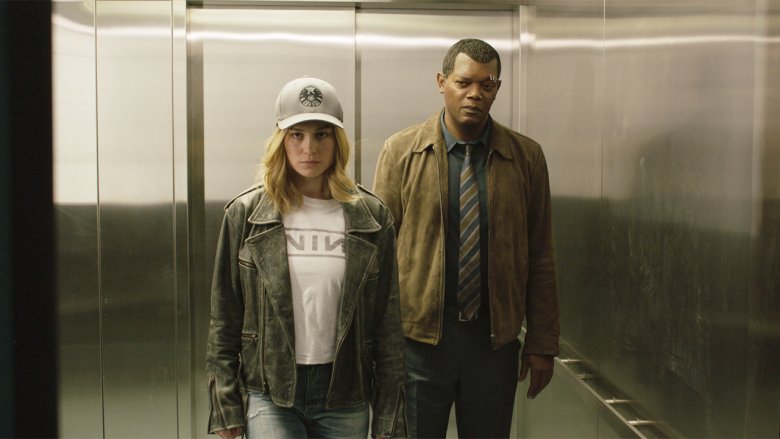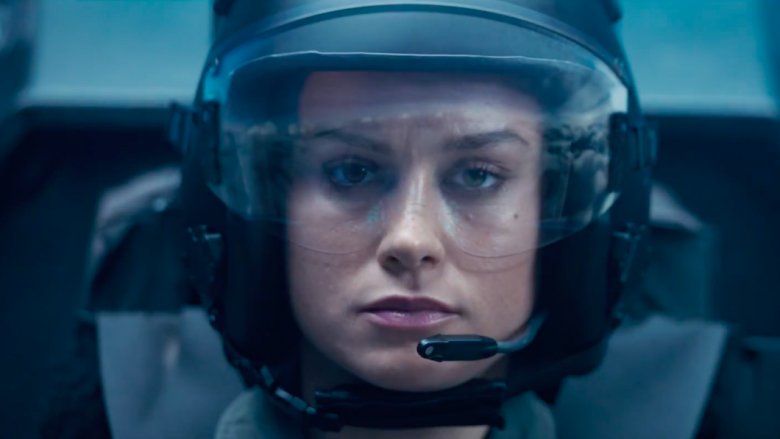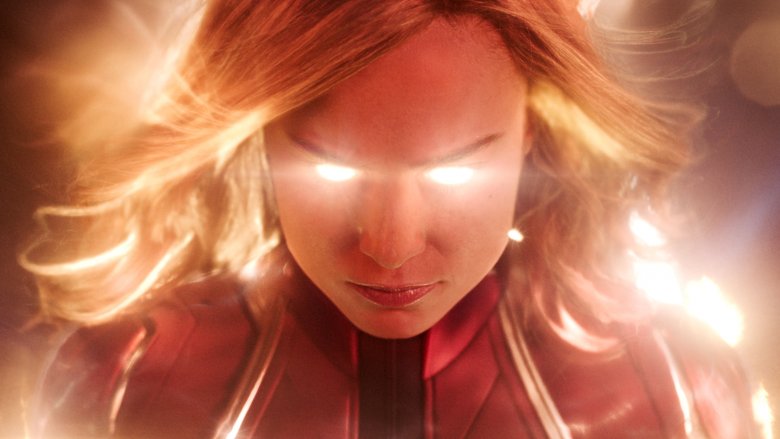Why Captain Marvel Blew Everyone Away At The Box Office
Captain Marvel blasted into theaters over its opening weekend with an astonishing domestic total of $153,000,000 in ticket sales. Adding global receipts bumped that figure to a staggering $455,000,000, making it the sixth-highest global debut of all time.
While those numbers are impressive to say the least, when one steps back and considers why the film did so well, it all comes into focus pretty quickly. While we're not talking about Avengers: Endgame here, there's still a photon fist full of different factors that drove the early rush to see Marvel's first female-led superhero outing as soon as it hit the big screen. From its impact on larger MCU storylines to the simple question "who is Captain Marvel in the first place?," here are some of the top reasons that Carol Danvers' debut ran away with the box office. Spoilers ahead!
The waiting game for Endgame
The elephant in the room for all things Marvel right now is Avengers: Endgame. Coming off last spring's anxiety-inducing third Avengers installment, everyone's dying to see what happens next. It isn't uncommon to have to wait years for a sequel, so the 12 months between Endgame and Avengers: Infinity War isn't that long in the grand scheme of things — but Marvel fans have still been eagerly anticipating the survivors' final battle against Thanos after his snap-pocalypse knocked out half of the life in the galaxy.
The pent-up demand for Endgame has certainly lent a boost to the Marvel movies that came out in the interim, with Ant-Man and the Wasp pulling in a neat $617 million worldwide and Captain Marvel raking in over two thirds that total in its first few days of release. While there are a ton of different factors Captain Marvel's success, the backdrop of Endgame looming a mere seven weeks after its release date surely helped the movie soar to blockbuster heights.
Answering big questions
While any Marvel movie is sure to have the answers to a lot of questions, Captain Marvel was absolutely rife with them. There were internal questions like who Jude Law was playing (Yon-Rogg, not Mar-Vell as had been rumored — and definitely not an amalgam of the two) or how they would choose to represent the Supreme Intelligence of the Kree (thankfully not in its ugly literal form). There were also some answers to bigger questions, like how the Tesseract ended up with S.H.I.E.L.D. in the beginning of Avengers as well as how Carol Danvers would make her entrance in Endgame.
The question of how Nick Fury's pager could reach someone lightyears away — as we saw it used during Infinity War's post-credits scene — was answered when Carol upgraded it to be able to reach a distance of "a couple galaxies." The reason Fury didn't use it until Infinity War? Carol's condition that it was for emergencies only. Even the question of how Danvers will arrive in Endgame was provided in the mid-credits scene, which showed Cap and company watching the rigged pager slowly running out of juice, only to turn around and find Danvers asking for Fury. The scene leaves the skids greased for Endgame to start with all the pieces in place.
Who is this Captain Marvel you speak of?
Many of the lead characters that have found their way into Marvel's cinematic universe have been at least semi-familiar to audiences before they hit the big screen. Hulk, Captain America, Thor, and Spider-Man were well-established mainstream names that drew crowds thanks to their earlier reputations.
Captain Marvel, on the other hand, was about a character who was, in many ways, a mystery, even to herself. Before the symbol popped up on Fury's pager, most fans who weren't particularly acquainted with deeper comic lore might have been a bit stumped as to how that little star had anything to do with stopping Thanos. Of course, the question only added fuel to the fire, adding a mystique to Carol Danvers that has doubtless been a key driver in getting all those butts into the seats. People want to find out who this character is — and why Fury thought she of all people was the one he needed to call when the worst case scenario came to pass.
90's Nostalgia
The success of shows like Stranger Things has continued to confirm that nostalgia-driven pop culture remains big business, and Captain Marvel takes full advantage. It was well-known beforehand that the film would at least partly place in the '90s; as it turns out, pretty much the entire film is set during the decade — specifically 1995, when we meet an amnesiac Carol Danvers living as an elite soldier for the Kree — and the screenplay utterly capitalized on the opportunity to throw out as many mid-'90s callbacks as possible.
From the moment she arrives on Earth through a Blockbuster rooftop and blasts a True Lies standup display, the '90s references are hot and heavy. A security guard directs Danvers to a Radio Shack, where she uses a Game Boy to wire the phone and contact Yon-Rogg. In a cafe, Danvers is shown trying to use Alta Vista to search for information. Maria Rambeau's home computer is used to play a recording from the black box on Carol's downed Air Force ship, with all the slow loading computer users had to deal with back then (used expertly to Marvel-style comedic effect). No Doubt's "I'm Just a Girl" serves as the soundtrack for a key battle. From Discmans to Nerf guns, grunge and the Fresh Prince, the satisfying nostalgia-fest just keeps going from start to finish.
A long winter
While Captain Marvel had more than enough firepower to succeed on its own, it did have help — and not just because it's a sort of opening act for Endgame. Just as importantly, it arrived at the end of a subpar winter for the cinema in general. While 2018 was a huge year for theaters across the globe, a couple of months into 2019 the numbers, in comparison, appear anything but grand. In fact, the U.S. box office brought in a measly 1.2 billion between January 1 and February 18, marking its lowest start to the year since 2011.
The second Captain Marvel swooped into theaters, film fans far and wide shook off their cinematic sluggishness and flocked to see the first new MCU addition of the year. It added up to an insane amount of cash over those first few days after its opening — nearly a third of the total generated during the first seven weeks of the year. It just serves to remind studios that audiences won't watch whatever they're given anymore. They'll sit on their hard-earned cash waiting for something good to come along before they decide to buy tickets.
A Marvel-ous first
Of course, when considering various reasons that people would go to watch Captain Marvel, one of the most obvious factors that certainly helped the film was the fact that at long last the MCU has a female lead. While supporting characters like Black Widow and Scarlet Witch have slowly been working their way toward headlining projects, it turned out to be Danvers' debut that finally integrated a lead female superhero into the MCU — and the timing was superb.
Carol Danvers is a legendary hero with a tremendous comics pedigree (the character celebrated her 50th anniversary in 2018), and while Marvel toyed with the possibility of bringing her into the MCU earlier, there's hardly been a better time to introduce her than now. With franchises like Guardians of the Galaxy and Thor laying a cosmic groundwork for years at this point, Marvel's onscreen adaptations were finally ready for a hero with her level of power to fly onto the scene. Clearly, audiences agree.
Overpowered
Speaking of Carol Danvers' power, another mystery that beckoned viewers to the theaters on opening weekend was the curious case of how this character's legendarily overpowered abilities would translate to the silver screen. Even comics fanatics couldn't exactly guess how her decades of various abilities would be depicted onscreen, while casual observers had little to no idea what to expect apart from some seriously flashy scenes from the trailers.
It's fairly safe to say that none of the characters introduced into the MCU before Captain Marvel have had quite her level of power. While the details can be argued, the cinematic manifestations of characters like Hulk, Vision, or Doctor Strange haven't been quite as spectacular as Captain Marvel.
For example, none of the aforementioned characters has ever stopped a Kree nuclear warhead mid-flight and thrown it back into space. Neither have they single-handedly destroyed a giant spaceship in a few seconds, as Danvers did at the end of her film. Heck, Ronan wasn't afraid to take on all of the Guardians of the Galaxy at the end of their first solo adventure, and yet Danvers had him scampering for his life after a few minutes. The chance to watch superhero fireworks on this level was a treat that drew filmgoers far and wide.
Knowledge beckons
Marvel has historically been pretty stingy about doling out details before their movies are released, and Avengers: Endgame is no exception. However, Captain Marvel was marketed with a completely different approach. There were numerous trailers, interviews, and TV spots beforehand showing gobs of footage that teased audiences to come and join in the fun.
The Endgame approach may be working well for the second act to a compelling story that is sure to bring everyone back to theaters, but the decision to provide so much information and such a variety of teasers for Captain Marvel was the right call for a film led by such a mysterious character. From the sarcastic humor to shots of her glowing from head to toe and blasting her way through space, the folks at Marvel made sure that audiences had a good sampling of the movie to go off before they made their decision to purchase tickets.
Who's a Skrull?
Captain Marvel heralded a huge expansion of the MCU by properly introducing the legendary comic book staple of the Kree-Skrull War. The movie opened with a prolonged series of events that took place on the Kree home planet of Hala, showcased the MCU's manifestation of the Supreme Intelligence, and demonstrated just how powerful the scientifically advanced, warlike race is. As the movie progressed, it also introduced everyone's favorite shapeshifters, the Skrulls. The pointy-eared green fellas immediately spiced things up as they arrived on Earth and shapeshifted into a batch of surfers that spread out in search of their prey.
While the Kree and Skrull are interesting facets of the film, especially the pleasantly surprising positive twist of Talos and his family, the knowledge that they would finally be landing in the limelight on Marvel's cinematic stage was a huge buzz factor in the weeks leading up to the film. The anticipation even sparked a flood of fan theories regarding which MCU characters might end up being revealed to have been a Skrull all along. While the film didn't directly show any long-term connections between the Skrulls and any of the heroes we've come to know and love over the years, the curiosity was certainly a factor that whipped up fan interest and drove them to the cineplex looking for answers.
Nicholas Joseph Fury
Each Avenger's story arc is interesting in its own way, but perhaps one of the greatest enigmas of the MCU thus far has been the man that literally everyone, including his mother, simply calls "Fury." Captain Marvel lured fans with its promise to finally give him a healthy dose of backstory, and it didn't disappoint. We found out he'd been a soldier, international spy, and finally a deskbound bureaucrat before he crossed paths with Danvers. He was also "never one to believe in aliens," although that changed on a dime. We even got up close and personal when he dropped some heavy knowledge regarding his aversion to diagonally cut toast.
We also finally found out how America's Top Spy lost his eye. In a word: Goose. Earlier in the film Fury suffers some damage to his eye that ends up being nothing but a red herring, but in the film's closing minutes, Goose — who had saved his life moments earlier — played the unpredictable role of a Flerken to a T, scratching the future SHIELD director's eye with a quick wave of his alien paw.
Origin-al
The 2018 box office was overshadowed to an extent by the massive popularity of Avengers: Infinity War, which makes it easy to forget that the war against Thanos came on the heels of the Wakandan success story of Black Panther. While the triumph of Infinity War is pretty easy to explain — from its incredible scope and build-up to the fact that it was a monster crossover that attracted fans from all over the MCU — Black Panther's similar level of popularity came in spite of its smaller scope and lack of already established characters.
The point? Marvel origin stories, especially unique ones, attract crowds. T'Challa's epic was rooted outside the United States and brought a fresh perspective to the superhero origin story. Captain Marvel, in many ways, played off the same formula. From the female lead character to the Star Wars-esque overtones of its space-centric plot, Captain Marvel combined the familiar formula of an origin story with the thrill of the unknown — and did it in a universe that everyone thinks they already know so well.
In addition to Carol Danvers' origin, it also gave us pieces of Nick Fury's past, and even threw in a little background on fan favorites like Phil Coulson and Ronan the Accuser (even if their involvement ended up being little more than a couple of glorified cameos). From lead actors to minor supporting characters, the "origin story" element to this one was about as attractive as it gets.
An eye to the future
Another major factor that Captain Marvel had going for it as it entered its opening weekend was that it introduced a character with an open-ended future. With over ten years of the MCU under our belts, many of the characters and storylines we're anxiously keeping tabs on involve heroes and villains that have had an onscreen presence for years and may not be around much longer. Thanos was hinted at all the way back in Avengers, while well-established characters like Tony Stark and Steve Rogers have very uncertain futures.
This makes Carol Danvers a refreshing breath of fresh air. Not only is she a new face, but she's going to be around for a while, so getting attached is okay at this point. In late 2018, Collider reported that the specific status of Brie Larson's deal with Marvel isn't quite clear, but it would appear that she's on the hook for roughly seven movies along with appearances in multiple franchises — which means we can count on more of the new Cap for a long time to come. It's a new chapter for the MCU during an era when closure is on everyone's mind.
Marvel-ous momentum
The final, overarching factor that is absolutely a driving force behind the marvelous success of Captain Marvel is...well, Marvel. Carol Danvers represents part of a larger universe that everyone can't get enough of. Whether it's a crossover smash like Infinity War, a continuation of a franchise like Thor: Ragnarok, or a brand new character like T'Challa or Captain Marvel, there's no doubt at this point that Marvel has got the golden touch.
And it's no wonder, too. Very few studios can boast the tremendous depth and scope of planning that Marvel has brought to the table. Take Endgame, for example: Its plot revolves around deeply familiar characters like Stark and Banner, while simultaneously weaving in the arrival of Captain Marvel. The complexity and quality are impressive, and exactly why everyone ponies up their cash whenever a Marvel title hits theaters. On a certain level, audiences aren't really concerned with the specifics of any one Marvel film anymore — we're just along for the ride, and what a ride it's been.
